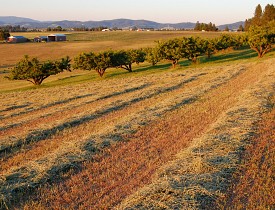Animal-Free Fertilizers for Your Healthy Home Garden
 Did you know that many of the traditional organic fertilizers, for hobby home gardeners, for professional landscapers and for large-scale commercial farmers, are derived from animals and their by-products? Blood meal, bone meal, manure, fish emulsion, the list goes on and on. Animal parts can pop up in almost every phase of a standard growing season. So much so, that using them can almost seem unavoidable.
Did you know that many of the traditional organic fertilizers, for hobby home gardeners, for professional landscapers and for large-scale commercial farmers, are derived from animals and their by-products? Blood meal, bone meal, manure, fish emulsion, the list goes on and on. Animal parts can pop up in almost every phase of a standard growing season. So much so, that using them can almost seem unavoidable.
But these days, a lot of people are choosing to grow their gardens without the addition of animal products, and for many different reasons: they may be vegan or have an ethical objection, they may have religious limitations, or they may have allergies, just to name a few. In water-strapped communities that are over-tapped by local plumbing demands, like San Diego, non-animal fertilizing practices like mulching can help to conserve water. So for those folks, here’s animal-friendly list. A handy dandy cheat sheet, if you will. Your options are as follows . . .
1. Compost
Compost is the perfect plant food. It’s incredibly rich in myriad minerals, and it also provides important beneficial bacteria and other essential micro fauna. These organisms help to colonize the soil, keeping it “clean” and within a desirable pH range.
You can make your own compost at home, using yard waste and kitchen scraps, or you can buy premade compost. Many brands offer animal-free options. Just look for boxes that are marked “vegan”.
2. Liquid Herbal Infusions
Many of the most common plants, even some that are considered pests, can be full of important minerals such as nitrogen, iron, calcium, magnesium, and sulfur. These “wonder weeds” include nettle, dandelion, oat straw, horse tail, and comfrey, to name a few.
It’s easy to make a strong infusion from any of these, by chopping them up and allowing them to steep in a bucket of water in the sun. Once the brew is good and strong, it can be used to supplement your vegetables or fruit trees.
3. Seaweed
Sea vegetables are an excellent source of trace minerals, like sodium, copper, zinc, and more. Many gardeners overlook the importance of these lesser minerals, because they’re so focused on the coveted trio, N-P-K. However, over time soil can become depleted of trace minerals, and plants can really begin to suffer.
Seaweed is sold as liquid or meal (often labeled as kelp). There are many brands available, so check out your local nursery.
4. Mulch With Straw
Mulching is a technique whereby the garden bed is covered with some sort of barrier – in this case straw – either over the winter or in order to prepare a new plot for planting. The benefit of mulching with straw is that the organic matter slowly breaks down and “feeds” the soil. Mulching also encourages worms to live underneath, and worms are the perfect ingredient for healthy, happy dirt.
5. Nitrogen-Fixing Crops
Also called “green manure”, this is another technique that uses actual plants to create an organic fertilizer. The nitrogen-gathering plants are allowed to grow for just a short while, and then they’re tilled into the ground. The cover crops provide a protection from weeds, while turning them under returns the nitrogen to the soil. The most common crops used for green manure are wheat, oats, rye, vetch, clover, peas, and broad beans.
Do you have any other animal-free fertilizing tips or tricks? Let us all know down in the comments!
Looking for a Pro? Call us (866) 441-6648

Landscaping Average Costs
Landscapers Experiences

Rock Landscaping Adds Curb Appeal To An Arizona Home

Oak Tree Planting Looks Great In Our New Home’s Spacious Yard



